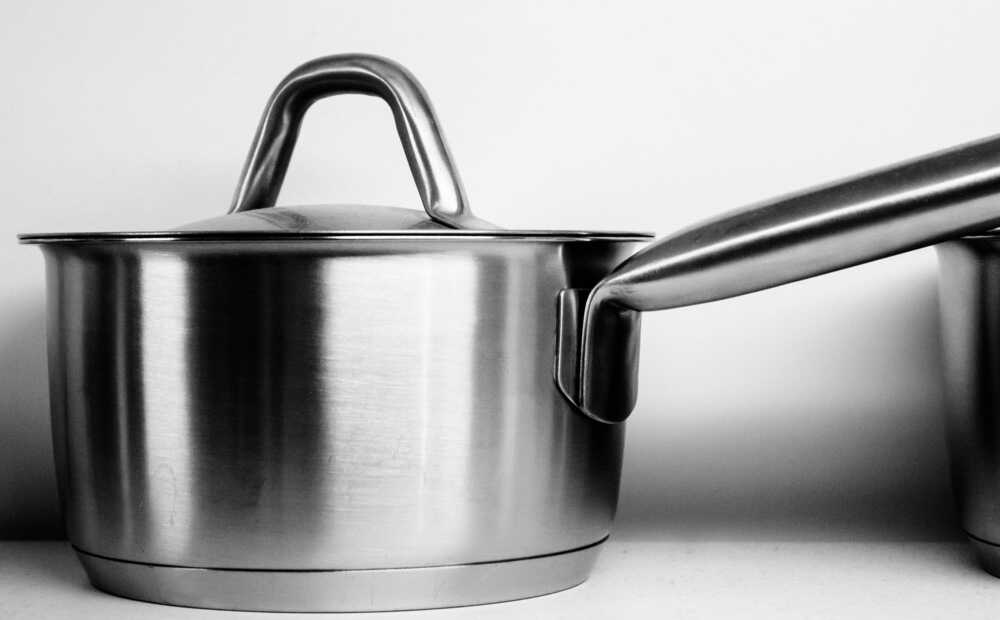Fun fact: aluminium is the most abundant metal in the world! It’s everywhere in our life: kitchen utensils, outdoor furniture, and even cars. In your home, you likely have aluminium in your windows, door frames, and gutters.
Aluminium is a fantastic material to use for different items since it’s lightweight and corrosion-resistant. However, it still gets dirty and rusty with time.
You can clean aluminium with a dish detergent and warm water mixture, especially for kitchenware. Then to polish, use cream of tartar!
(NOTE: You can also use white vinegar, but make sure to dilute it.)
Have you noticed that your aluminium household items are looking scuffed? Here’s how to clean aluminium and get it sparkling.
Types of Aluminium
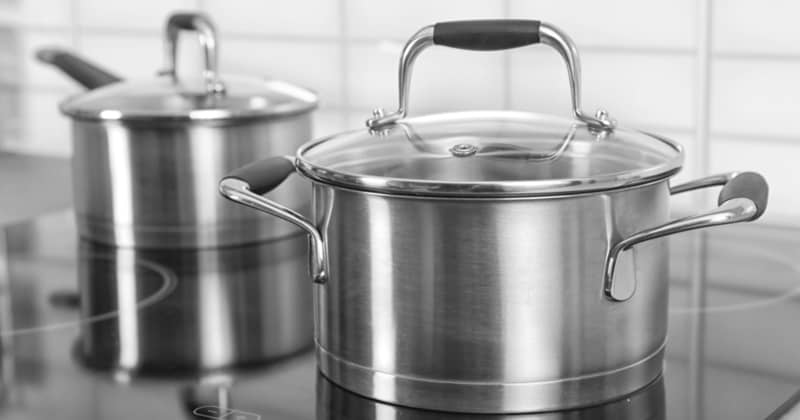
No worries – we won’t get too technical. Just know that there are 2 broad types of aluminium: cast and wrought. Each type has different amounts of other metals mixed in.
1. Cast aluminium
This is aluminium that’s poured into a mold after it’s been melted. It has a higher concentration of other metals, such as steel and nickel.
Kitchen pots and pans are common examples of cast aluminium. Refrigerators and stoves are “brushed aluminium” – cast aluminium that’s polished to a satin finish.
2. Wrought aluminium
This metal has been mechanically shaped from a single, solid piece of metal. It has lesser concentrations of other metals. This is commonly found in antiques.
Cleaning Aluminium Surfaces
You can use white vinegar or lemon juice to clean aluminium, but both are acidic solutions. Acid can degrade metal surfaces with excessive exposure, so it’s best to dilute either liquid in warm water.
Not all aluminium alloys are the same – some may have a special coat, such as paint or lacquer. These items will require special cleaning instructions, so check the instruction manual or manufacturer’s label for directions.
For regular cleaning of simple aluminium surfaces, though, you can just use dish soap and water! Then pair that cleaning solution with a non-abrasive scrubbing pad.
Avoid using steel wool – this could scratch the aluminium surface.
TIP: If you don’t want to do all that work, leave the aluminium cleaning to professional cleaners! They can scrub down your stovetop, fridge, sink, and kitchen appliances to get them looking good as new.
Cleaning Aluminium Kitchenware
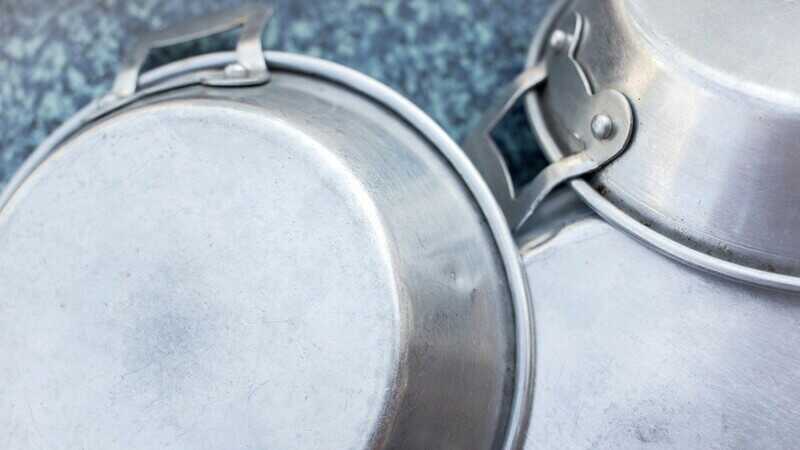
For pots, pans, and kettles, you may need to descale your cookware and appliances after cleaning. Grease and water deposits can build up, which will discolour the aluminium.
For appliances made of other metals, read on how to clean stainless steel.
1. Wash the kitchenware
Start with the basics: wash your pots and pans with soap and water. Your goal here is to remove any stuck-on food and some of the grease on the surface.
2. Descale with vinegar
Mix some lemon juice with half a cup of vinegar. Fill the pot or pan up halfway, then add the cleaning mixture. Let the water boil for at least ten minutes, then cool the kitchenware down.
You can do the same for an aluminium electric kettle.
For a fridge or stove top, use the same cleaning mixture in a spray bottle. Spritz the surface and let the solution sit for ten minutes.
3. Scrub the surfaces
Use a non-abrasive sponge or cloth to clean inside the pot, pan, or kettle. You’ll need to put in some effort for the more stubborn stains. Afterwards, rinse and then dry.
Cleaning Aluminium Furniture
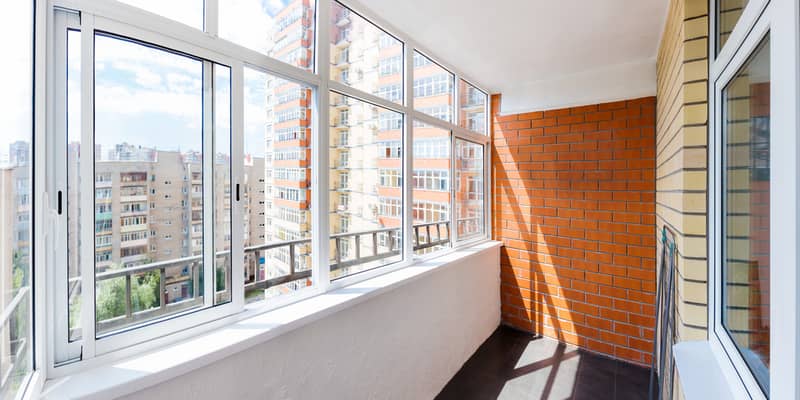
Aluminium is a popular metal for window frames, sliding door tracks, and outdoor furniture. But exposure to elements and constant use can affect the appearance of the metal. Here’s what to do in order to clean aluminium furniture.
1. Wipe down with a clean cloth
It’s time for some elbow grease! Use a clean, damp cloth to wipe away any surface debris and dirt. Dig in a little bit for the stubborn stains.
2. Clean with dish soap
Mix a few drops of dish detergent with water, then use a soft cloth or non-abrasive sponge to scrub the solution into the aluminium. If you have grease-cutting detergent, so much the better.
3. Rinse with water or a damp cloth
If you’re cleaning outdoor aluminium furniture, ensure nothing in the area will be damaged if you rinse using a hose. Otherwise, you can use another damp cloth to wipe off the soapy residue.
4. Dry the surfaces
Finally, use a fresh cloth to dry the surfaces thoroughly. Aluminium may be corrosion-resistant, but all metals are prone to rust if exposed to moisture for prolonged periods of time.
Let the furniture air dry after wiping.
How to Clean Aluminium Window Frames
For aluminium window frames, use a non-abrasive cleaner or sponge so you don’t scratch the surfaces. For example, clean using a soft cloth dipped in soapy water. Grease-cutting detergent will work wonders!
You can also dilute a cup of white vinegar in 1–2 litres of water and use that to clean aluminium window frames. Make sure to rinse with a damp cloth right away.
Whichever method you use, use a clean cloth to dry your window frames thoroughly – getting into every hinge, nook, and cranny. Water is the enemy of metals, and you don’t want your aluminium window frames to oxidise!
Cleaning an Aluminium Sink
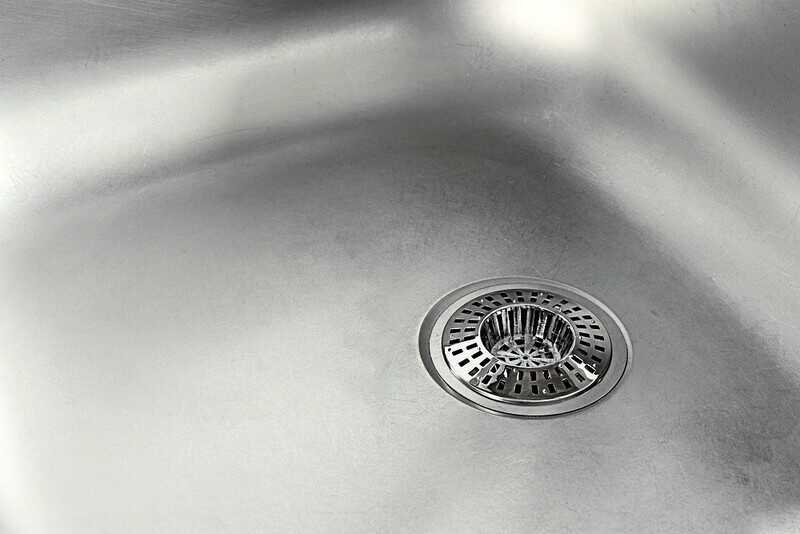
You can use borax to clean aluminium sinks if soap and water don’t do the trick. This shouldn’t be too tricky since the faucet is just there!
1. Sprinkle the sink with borax
Take some borax and sprinkle it all over the sink. Borax cuts through grease and removes water stains, so it’s effective at cleaning aluminium sinks without causing damage.
2. Wipe with a damp cloth
Dampen a clean cloth, then wipe the metal surfaces. Follow the grain of the metal without using circular motions, which could cause smudges and swirls.
3. Rinse and dry
Rinse the sink with water until all residue is gone. Then take a microfibre cloth and dry the sink.
How to Clean Oxidised Aluminium
Over time, aluminium oxidises – meaning the surface looks chalky and grey. To remove oxidation, start by cleaning the aluminium item with water. Rinse the surface or wipe it down to clean off any dust or debris.
For small objects, boil half a cup of vinegar in a pot of water. Turn off the heat, then place the objects inside the pot. Let them soak for 15 minutes, then rinse.
For larger objects or surfaces, soak a cloth in vinegar and wipe the oxidised area. Use a soft-bristled brush to scrub away the oxidation, then rinse with a damp cloth.
You can also use half a lemon dipped in salt to scrub the surface – just make sure you rinse right away!
How to Polish Aluminium
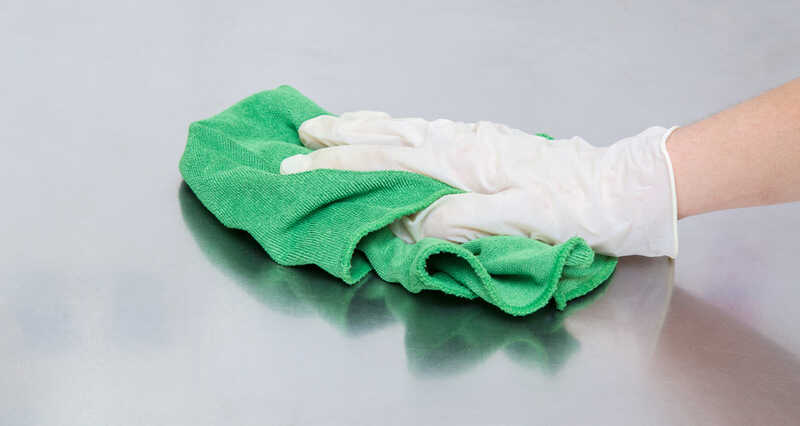
Once you’ve cleaned an aluminium surface, the next logical step is polishing aluminium! You can use aluminium polish after the cleaning process, but there’s a cleaning solution that’s likely already in your kitchen: cream of tartar.
Wear kitchen gloves, then dip a soft cloth in cream of tartar – just enough to polish a small area. Work in small, circular motions in one spot at a time. Wipe off any residue, then buff with a microfibre or flannel cloth.
There you have it – your guide on how to clean aluminium and polish it! Next time your aluminium furniture or aluminium pan looks scuffed, it’ll be easy enough to get it looking shiny and new again.

